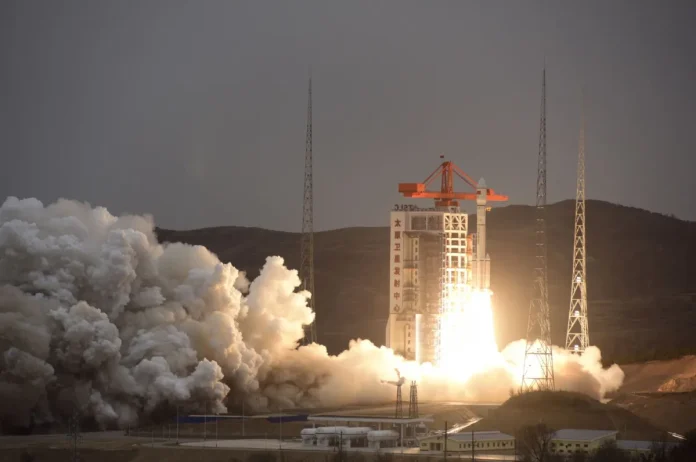In an attempt to establish a rival to Starlink from SpaceX, China aims to launch the constellation, which may develop up to 14,000 satellites that will beam high-speed internet from space, CNN reported.
China’s state media claimed to have blasted off 18 sptunics in low earth orbit (LEO) on Tuesday during the first launch of the government-backed Qianfan, or Spacesail. The constellation is trimming to join a handful of planned or operational large-scale space projects from ISPs in various countries offering broadband satellite internet services.
Qianfan, also known as G60 Starlink, is among three planned Chinese megastars to see the country’s firms launch nearly 40,000 satellites into low Earth orbit. According to state broadcaster CCTV, the constellation aims to grow to more than 600 satellites by the end of 2025, with over 14,000 satellites providing broadband internet around the world by 2030.
China’s intention occurs against the backdrop of the ambitions of Starlink, which has more than 6,000 satellites in orbit and ambitions to expand to 42,000, suggesting it will remain a dominant player in the coming years given its launch and advanced launch capabilities. In the meantime, China is ramping up its commercial space sector as part of Beijing’s broader attempt to cement its place as the dominant power in outer space. The country has already made huge strides in its ambitious national space programme, which aims to put astronauts on the moon by 2030, as well as launching military-related satellites for navigation, communications and surveillance.
Despite, experts believe the control of LEO’s broadband satellite constellations may spoil China, allowing its firms to offer services domestically and globally, while strengthening Beijing’s diplomatic influence, control over data flow and national security.
Qianfan: National Security, Informational superiority
China’s passion for broadband mega-satellites comes as governments and companies around the world increasingly turn to satellites for everything from communications to military operations. For instance, the Ukraine-Russia conflict has also emerged as a contributing cause, as access to Starlink has been a key asset for the Ukrainian military, thus putting LEO’s broadband satellites in the spotlight because of their security implications. Apart from, it is a national security issue as SpaceX has the capability to support US ground forces and strike capabilities in regional conflicts.
According to China’s position, the Qianfan launch is part of the country’s broader push to improve space capabilities and commercial applications. However, the Chinese government recognises so-called dual-use, which can also serve as something of an aide to the information field or data flow.
Qianfan and similar constellations could bring diplomatic benefits for Beijing in internet and communications services as part of deals with governments under the One Belt and One Road Initiative, leading the US government to raise alarms about perceived security risks to countries using Chinese ground-based infrastructure and equipment.
Promoting the commercial space sector, including satellites, launch capabilities and technology manufacturing, is an economic priority for China. The 18 satellites sent into orbit this week appear to put Qianfan ahead of China’s other two planned Chinese communications constellations in LEO. Plans for the Qianfang project were announced in 2021 as part of a state-backed technological innovation scheme in China’s booming Yangtze River Delta. Its operating company, the Shanghai government-backed SSST, raised $933 million earlier this year.
